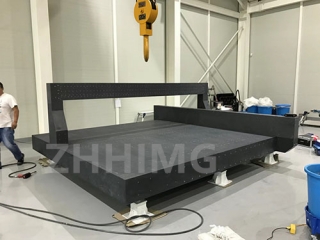Granite is a material that is widely used in optical waveguide positioning devices due to its unique properties and characteristics. It is a naturally occurring igneous rock that is composed of quartz, feldspar, and mica minerals. The use of granite components in optical waveguide positioning devices is primarily due to its exceptional stability and dimensional accuracy.
Optical waveguide positioning devices are used in a variety of applications, such as telecommunications, fiber-optic networks, and laser systems. These devices require high precision and stability, as even minor fluctuations in the position of the waveguide can adversely affect the signal transmission quality. Therefore, materials used for the construction of these devices must be stable and provide high dimensional accuracy.
Granite is an ideal material for the construction of optical waveguide positioning devices due to its high stability and dimensional accuracy. Granite has a low coefficient of thermal expansion, which means that it does not expand or contract significantly with changes in temperature. This property ensures that the position of the waveguide remains stable, regardless of fluctuations in the ambient temperature. Additionally, granite is chemically inert, making it impervious to chemical reactions and environmental degradation.
Another significant advantage of granite is its exceptional hardness. It is known to be one of the hardest materials on earth, making it resistant to wear and scratch. This property ensures that the positioning device remains accurate and stable over a long period, even when subjected to constant use.
Furthermore, granite provides excellent vibration dampening properties, meaning it can absorb and dissipate mechanical vibrations. This feature is crucial in optical waveguide positioning devices as vibrations can cause the waveguide to shift position, resulting in signal losses.
In conclusion, the use of granite components in optical waveguide positioning devices is a wise choice due to its exceptional stability, dimensional accuracy, and resistance to environmental factors. It is a reliable and durable material that provides long-term performance and is well-suited for high precision optical positioning applications.
Post time: Nov-30-2023

